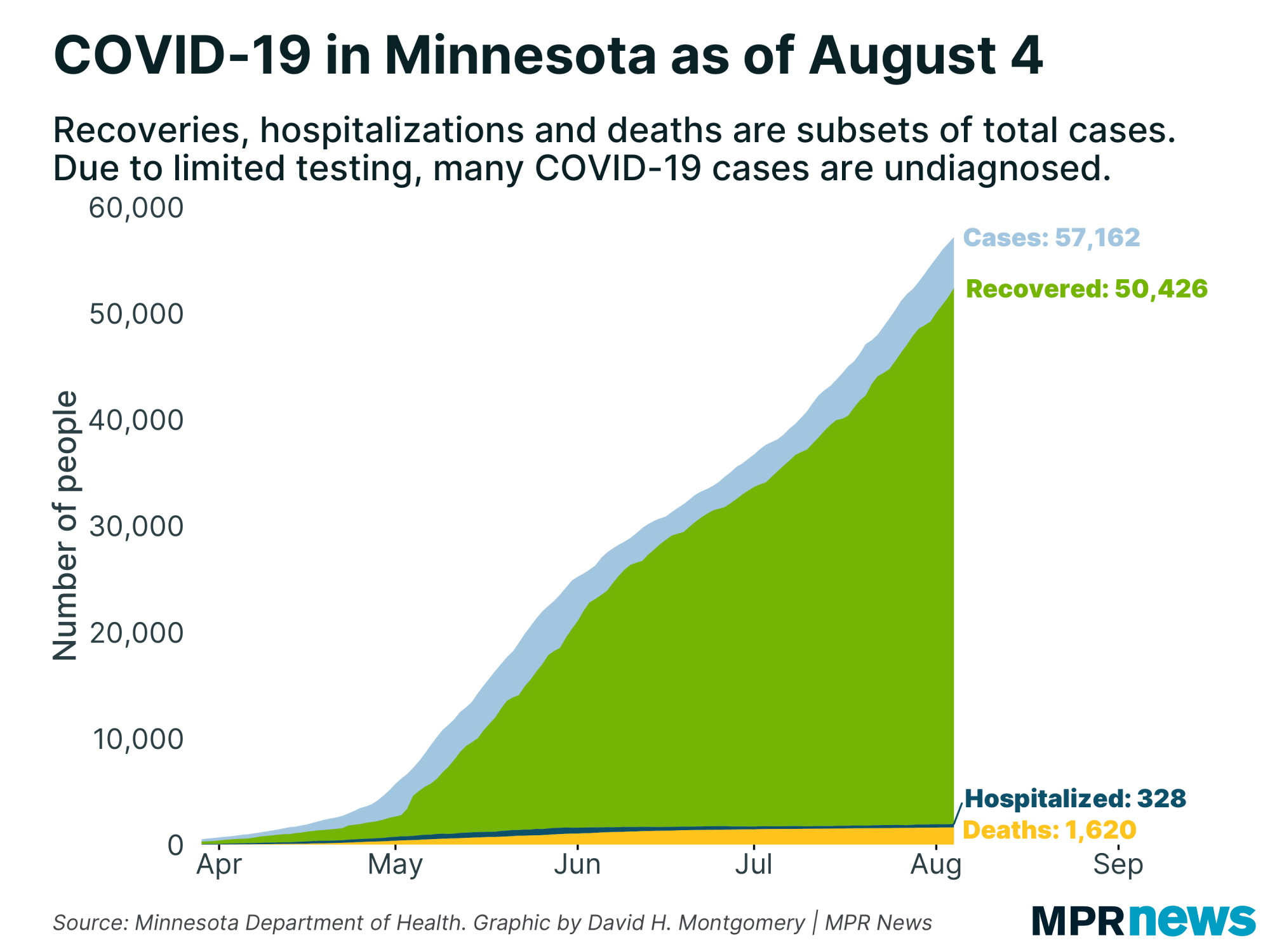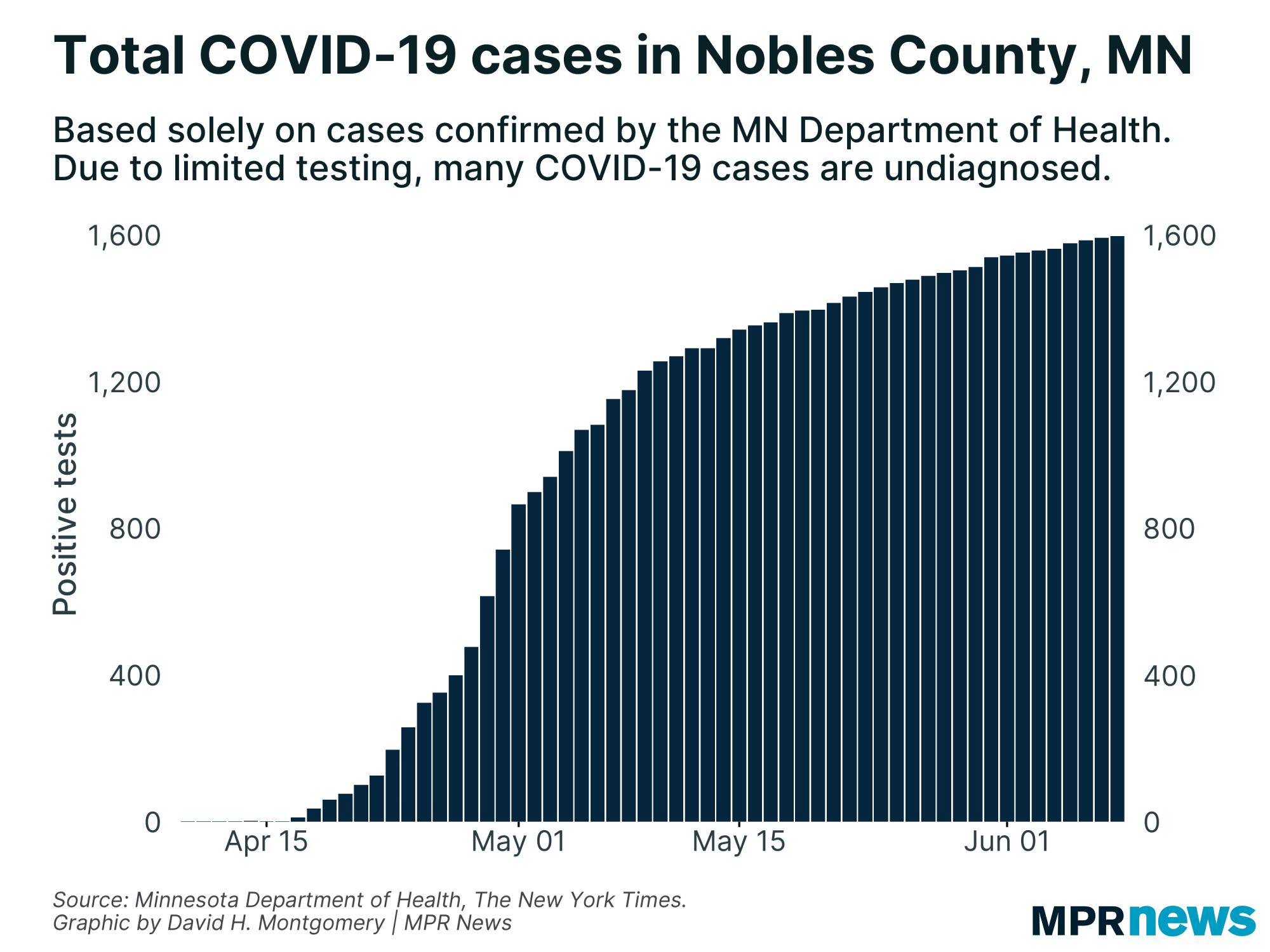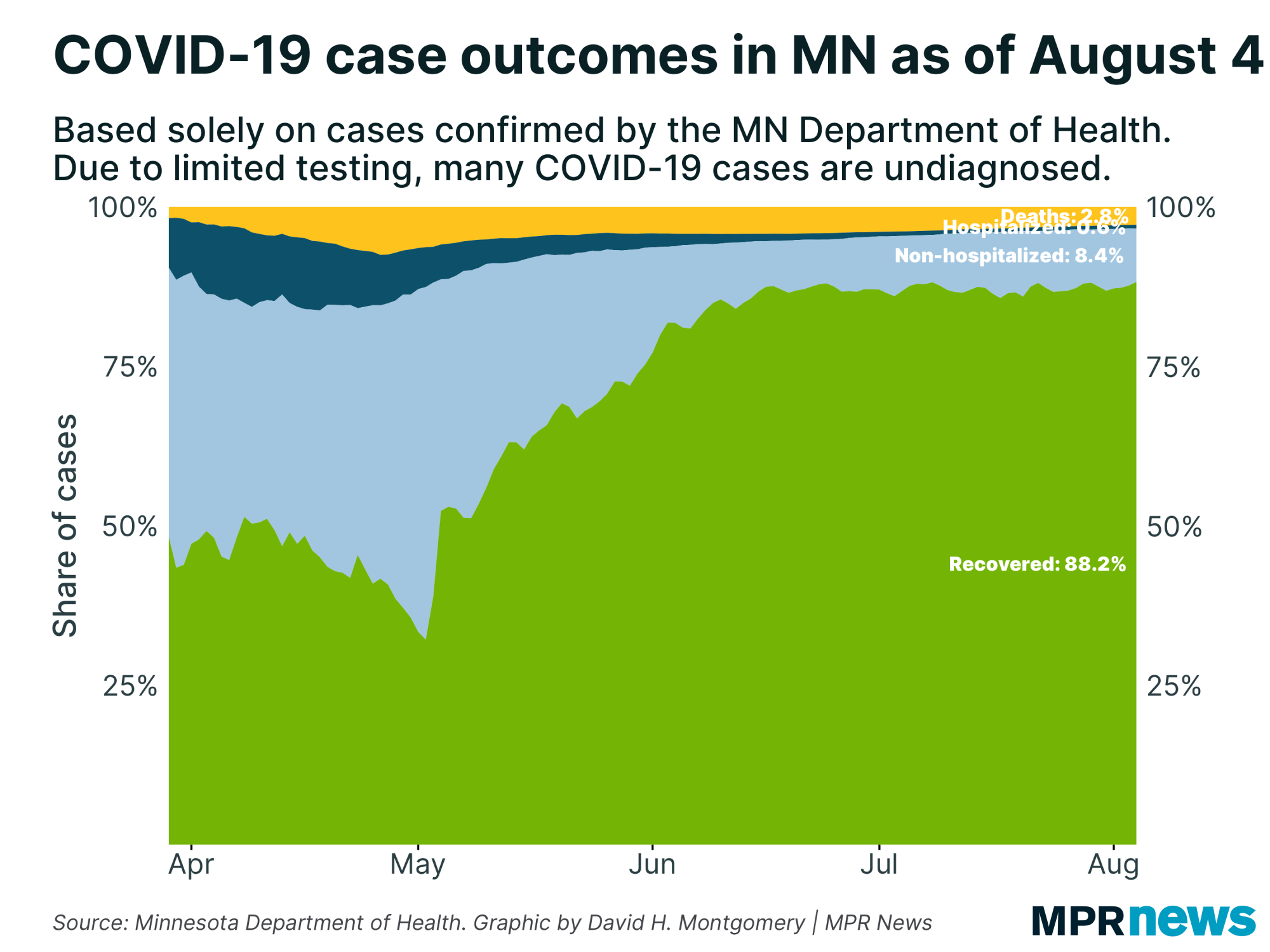April 16 update on COVID-19 in MN: 94 dead, 103 in ICU; U eyes going big on testing

Go Deeper.
Create an account or log in to save stories.
Like this?
Thanks for liking this story! We have added it to a list of your favorite stories.
Updated 5:34 p.m. | Posted: 5:30 a.m.
Minnesota officials Thursday reported 94 deaths tied to COVID-19, up seven from Wednesday. Hospitalizations rose, and 103 people were in intensive care units, up 10 from the prior day.
The new numbers came on the same day University of Minnesota scientists offered at least some hope in a key part of the COVID-19 battle. The U said its researchers have invented a way to solve the state’s testing shortage and dramatically expand testing statewide for COVID-19 and antibody resistance. The U is seeking $20 million from lawmakers to implement the plan.

Gov. Tim Walz has said Minnesota needs a drastic increase in COVID-19 testing in the next three weeks in order to begin safely reopening the state's economy. He’s pushing for 5,000 completed tests a day by May 4, when his stay-at-home order is set to expire — a tall order given that the state was reporting a daily average below 1,200 tests during the first days of this week.
State Health Commissioner Jan Malcolm said Thursday she was aware of the U’s efforts but hadn’t had time to study them and couldn’t comment on the university’s specific proposal.
Turn Up Your Support
MPR News helps you turn down the noise and build shared understanding. Turn up your support for this public resource and keep trusted journalism accessible to all.
The Health Department reported 1,912 positive tests for the disease since the pandemic began, up about 100 from Wednesday. More than half of those who’ve tested positive so far have recovered to the point they no longer need to be isolated.
Health data experts caution that confirmed cases represent only a sliver of those Minnesotans carrying the coronavirus.
The seven additional deaths were in Hennepin and Ramsey counties. Officials say most of Minnesota’s deaths involved people with underlying health problems who were living in long-term care settings.
Seventy-two of 87 Minnesota counties now have at least one COVID-19 case confirmed. Mille Lacs is now on the list. While much of the focus has been on the Twin Cities metro area, the disease has found its way across Minnesota.
With 39 cases and four deaths, Martin County on the Minnesota-Iowa border continues to have the state’s most severe outbreak of any county relative to its population (19,785). The seven cases and two deaths in tiny Wilkin County, south of Moorhead on the North Dakota border, are also concerning given the number of residents (6,254).

Beyond their immediate concerns, state officials said Wednesday they're making headway on addressing shortages of masks and personal protection gear for health workers. They said the stay-at-home order and other measures pushed back the expected peak of hospitalizations to the summer, buying time for them to source and stockpile equipment.
While Republicans and Democrats have been fairly united in the state’s response to COVID-19, political rifts are continuing to grow.
Republican House Minority Leader Kurt Daudt this week argued that the state needed to tailor restrictions to those at higher risk and "allow the rest of us to go back to work." Walz, a DFLer reiterated Wednesday he also wants to get people back to their jobs but “you can’t just say you want to restart” the economy.
Noting that Minnesota has the lowest infection rate in the country, Walz said Minnesotan’s efforts over the past month to keep people home and out of crowded public spaces was working to check the disease.
“All of this sacrifice that we made,” he cautioned, “could be eaten up very quickly.”

Malcolm reiterated that sentiment on Thursday, noting that South Dakota is struggling with an outbreak now at a pork processing plant near the Minnesota border.
“Everybody understands the desire to return to work, to return to engaging in the community,” she said. “Doing that prematurely, or where we don’t have the measures in place to assess the safety of a workplace, can really back fire and put us in a worse situation than we are today.”
Peppered with reporter questions about when life might return to normal after the stay-at-home order ends May 4, Malcolm and Kris Ehresmann, the state’s infectious disease director, couldn’t answer
Ehresmann said it was wise to let more data come in and evaluate it as the early May date draws near. “I’m with everyone,” she said, “who wants this to be over.”
Developments from around the state
Metro Transit suspends all overnight light rail service
Metro Transit says it will suspend all nighttime light rail service beginning Saturday morning. The transit agency said on Thursday that Green and Blue lines will stop for the night at 9 p.m. and start again at 6 a.m.
The Blue Line between Terminal 1 and Terminal 2 at the Minneapolis-St. Paul International Airport will continue running overnight.
— MPR News staff
Majority of MN child care providers wait on 'not nearly enough' state funding
Nearly 70 percent of Minnesota's child care providers have applied for state grants available through the COVID-19 rescue plan.
Child Care Aware of Minnesota is administering $30 million in funding that the Legislature approved last month. At a House committee hearing Thursday, executive director Ann McCully said the organization received 6,000 applicants — but there is only funding for just over 1,000 of them.
"There is just so much need out there, even when we try to zero in on helping our essential workers," she said. "We are excited to be able to at least help those programs that will receive grants, but we know it will not be nearly enough."
The child care industry has been hit hard by the pandemic. Many child care providers have closed as more families stay home with their children. Some providers are concerned they may not be able to reopen.
— Riham Feshir | MPR News
Doctors in MN Legislature warn against lifting stay-home order early
Minnesota lawmakers who are practicing physicians are refuting claims by some politicians that downplay the seriousness of COVID-19.
DFL Sen. Matt Klein, of Mendota Heights, and state Reps. Alice Mann and Kelly Morrison say their experiences watching the disease unfold underscores the importance of the stay-at-home order and reopening the economy at the appropriate time.
Klein, who is a hospitalist at Hennepin Healthcare, said physicians are treating an increasing number of patients while dealing with a shortage of masks and ventilators.
“And yet at the same time that this is occurring, we hear national and state leaders saying things such as medical staff are diverting or stealing personal protective equipment, hospitals and staff are exaggerating or falsifying diagnoses of COVID-19 to manipulate people, or to grasp power or to line their pockets,” Klein said.
Mann, an emergency room doctor, warned what would happen if the stay-at-home order, which is set to lift May 4, ended early.
“If we open everything up without a thoughtful plan, which we are furiously working on, we will see a spike in infections overwhelming our health care system, and more people will die,” she said.
Some Republican lawmakers have expressed concerns about the economic toll of the coronavirus. Senate Majority Leader Paul Gazelka, R-East Gull Lake, has been pushing for a reopening of the state, saying that the models used by Gov. Tim Walz show a stay-at-home mandate for the most vulnerable has the same mortality rate and intensive care unit demands.
Walz has countered that he is working off the best data and guidance available.
— Riham Feshir | MPR News
Governors vow coordination in economic restart
The governors of Minnesota, Michigan, Wisconsin, Ohio, Illinois, Indiana and Kentucky said Thursday they would work closely as they move to reopen their economies.
“We are doing everything we can to protect the people of our states and slow the spread of COVID-19, and we are eager to work together to mitigate the economic crisis this virus has caused in our region,” the governors said in a statement.
The group said they’d make decisions based on facts, science, and recommendations from experts in health care, business, labor, and education but that “our number one priority when analyzing when best to reopen our economy is the health and safety of our citizens.”
— MPR News Staff
Jobless report shows ‘leading edge’ of virus’ impact
It’ll be another month before the massive layoffs due to COVID-19 are reflected in Minnesota’s unemployment figures.
On Thursday, the state reported the seasonally adjusted unemployment rate for March remained at 3.1 percent, unchanged from February. The statistics were gathered before a wave of layoffs began in the middle of March.
More than 450,000 people have applied for unemployment assistance since March 16. Thursday’s report shows only “the leading edge” of coronavirus unemployment impact, said Steve Grove, commissioner of the Department of Employment and Economic Development.
The report for April, which is due on May 21, will capture the brunt of the employment downturn. Even before that, the state says the labor force had shrunk by 48,000 people between February and March in a workforce pool that was slightly below 3 million people. Nationally, the unemployment rate for March was 4.4 percent.
— Brian Bakst | MPR News
Historical Society furloughs staff, shuts sites and museums through June
The Minnesota Historical Society says it will keep its sites and other facilities closed to the public through June 30.
It will also furlough almost half its staff on May 1 through the same date.
In a news release, director and CEO Kent Whitworth described the furlough decision as painful. The 274 affected staff members will be paid through the end of April, with health benefits coverage remaining in place through the furlough.
— Euan Kerr | MPR News
Top headlines
Minnesota Senate approves beer and wine takeout sales: The Minnesota Senate on Thursday passed legislation that allows bars and restaurants to sell wine and beer along with takeout food orders. Under the bill, customers could purchase one bottle of wine or up to a six-pack of beer with their food. The House is expected to take it up Friday. Walz said earlier this week that he is “totally supportive” of the proposal.
Officials say COVID-19 antibody testing is crucial to reopening business — but what is it? State officials are pointing to COVID-19 antibody tests as potentially important tools for reopening the economy. They may provide insight into how widespread the virus is, and how long it’s been here. But they’re issuing caution against a flood of tests on the market that may not be reliable or accurate.
When a patient really needs to open wide, but the dental office is closed: Gov. Tim Walz ordered dental offices to suspend routine and elective care in Minnesota during the COVID-19 crisis. But some dental offices chose to simply close, creating a problem for people seeking emergency care.
Experts say ‘there’s so much uncertainty’ regarding reopening the economy: There are more questions than answers when it comes to the future of the economy post-pandemic. We turned to the president of the Federal Reserve Bank of Minneapolis for his views on federal stimulus funding and who is hardest hit right now.
U of M's new low-cost ventilator gets FDA approval: The FDA’s decision means the new, simple ventilator developed by engineers and doctors at the University of Minnesota can be built and distributed to health systems. The U of M is open sourcing the design so they can be easily produced.
ACLU sues to release Moose Lake inmates due to COVID-19: The organization filed a petition Wednesday against the state Department of Corrections. According to the department’s database, 12 inmates in Moose Lake are confirmed positive for the coronavirus and another 31 inmates are presumed positive.
COVID-19 in Minnesota
Health officials for weeks have been increasingly raising the alarm over the spread of the novel coronavirus in the United States. The disease is transmitted through respiratory droplets, coughs and sneezes, similar to the way the flu can spread.
Government and medical leaders are urging people to wash their hands frequently and well, refrain from touching their faces, cover their coughs, disinfect surfaces and avoid large crowds, all in an effort to curb the virus’ rapid spread.
The state of Minnesota has temporarily closed schools, while administrators work to determine next steps, and is requiring a temporary closure of all in-person dining at restaurants, bars and coffee shops, as well as theaters, gyms, yoga studios and other spaces in which people congregate in close proximity.



